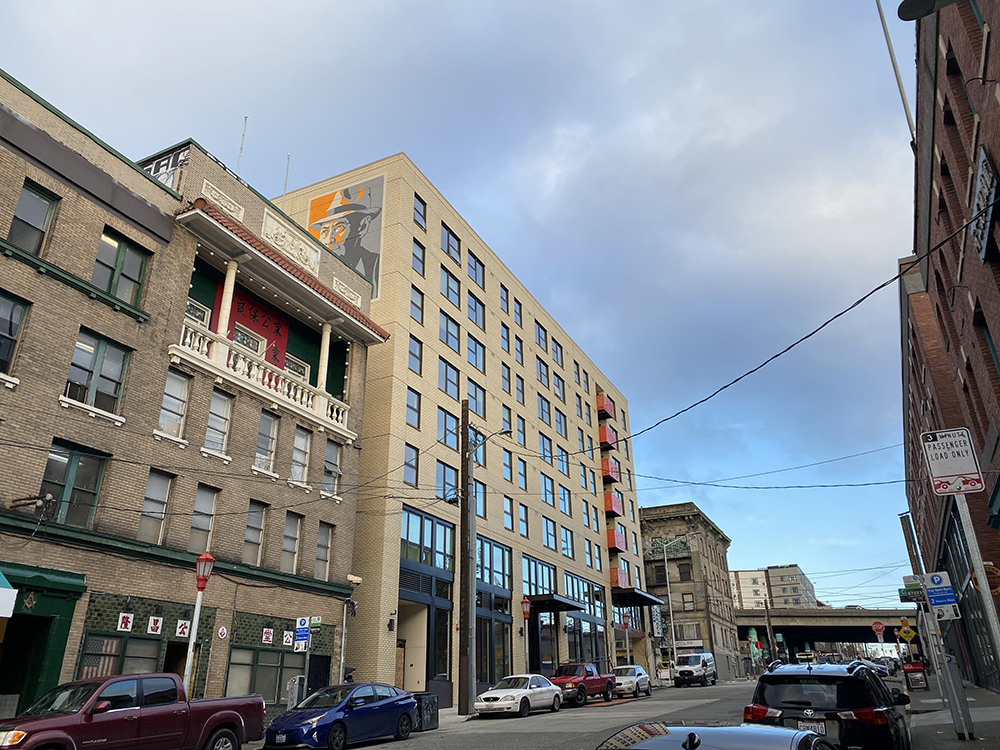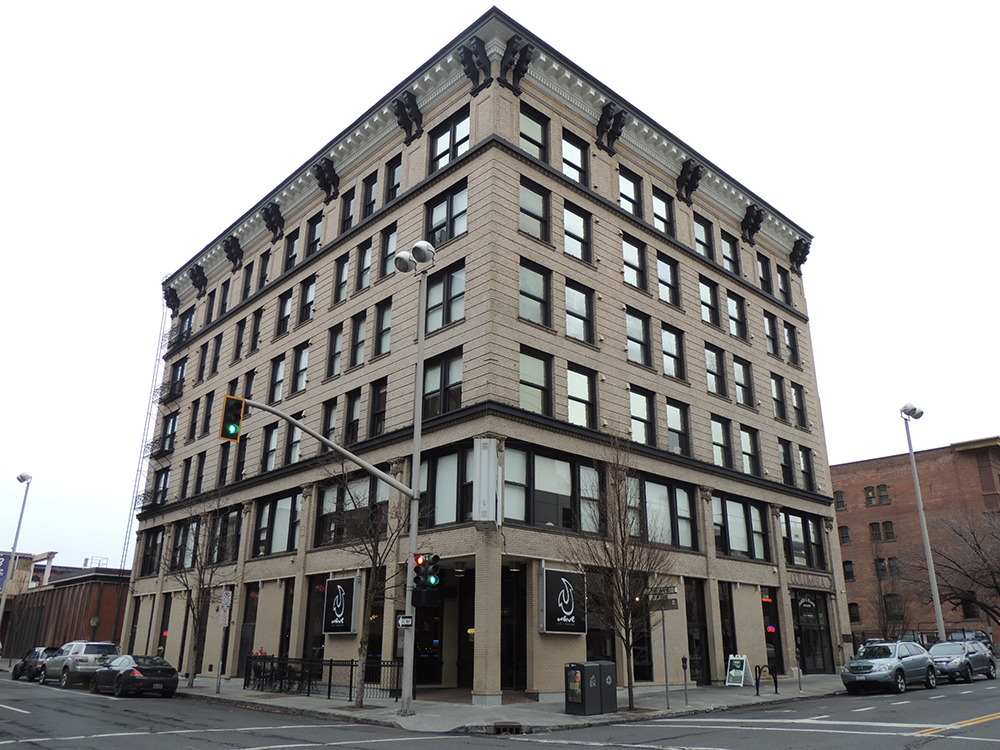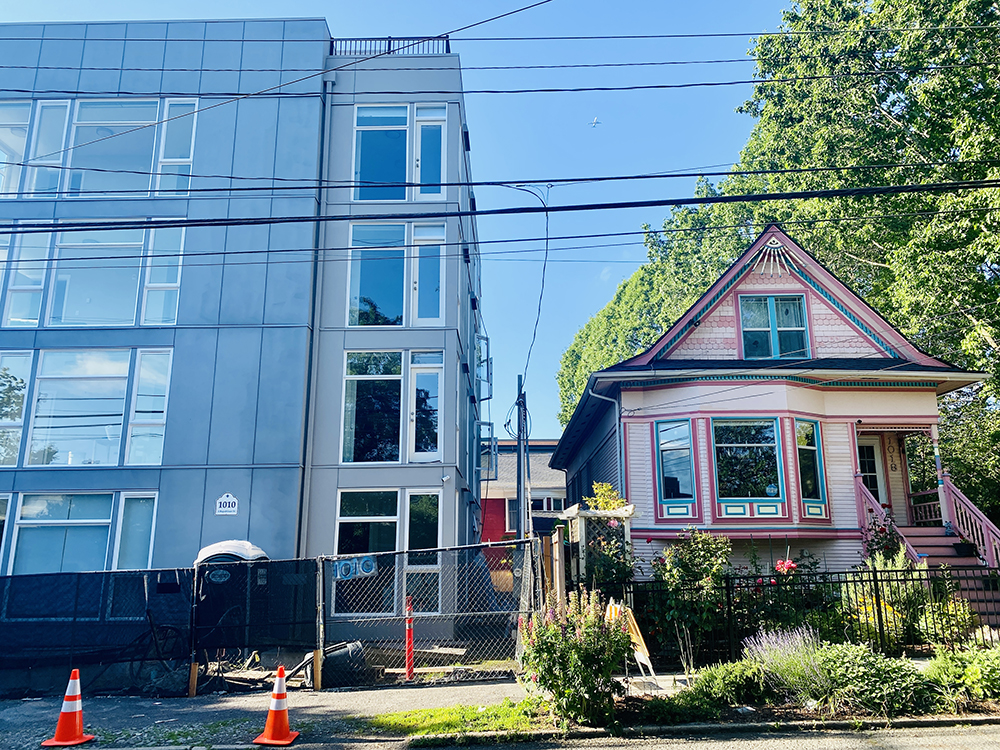Preservation and Housing: A Washington Trust Position Paper

By Huy Pham, Preservation Programs Director
The Washington Trust for Historic Preservation is committed to promoting sustainable and economically viable communities through historic preservation. As part of this mission, we recognize the importance of addressing the affordable housing crisis in Washington State and highlighting the potential role that historic preservation can play in providing housing affordability and increasing housing density.
The Role of Historic Preservation in Housing Affordability
Research by the National Trust for Historic Preservation’s Research and Policy Lab and others has shown that older buildings and neighborhoods contribute significantly to the environmental, economic, social, and emotional health of neighborhoods and their residents. They provide a diversity of housing types and a broader range of retail that support new and independent businesses and a vibrant local economy, alongside higher walkability and more green spaces compared to their suburban counterparts and contemporary development patterns. However, we also recognize that those quality-of-life benefits from living in an older neighborhood can become exclusive to those who can afford them.
While historic preservation is sometimes wrongly painted as one of the driving causes of the housing affordability crisis, only a small percentage—typically less than 5%—of the building stock in most American cities, including San Francisco and Washington D.C., are designated as local historic landmarks and districts. Both Seattle and Spokane have less than 1% of each city’s total land areas designated as historic districts or individual landmarks, meaning that regardless of the regulatory mythology around those neighborhoods, development opportunities remain abundant. However, we also recognize that these designated neighborhoods are often associated with affluent, largely White communities who have historically deployed preservation and planning code to exclude non-White families from homeownership and its subsequent generation wealth. We challenge the narrative that unfettered replacement of existing housing stock with denser units, without required affordable rates and quality material and design, would undo those past harms – and in some cases would even exacerbate displacement of the very same communities we seek to empower through housing opportunities. Furthermore, studies have also found that areas with older, smaller, and mixed-vintage buildings had significantly more households per acre, housing units per acre, and people per square mile than areas with consistently newer, larger buildings, which is counterintuitive to the often-envisioned historic single-family house in the way of a newly constructed four-plus-story apartment.
Yet there are several barriers to housing affordability such as lengthy development approval processes and outdated zoning codes that also hinder the ability to leverage older and historic buildings as assets for economic development and resilience in cities. As such, we must reevaluate the practices and priorities of historic preservation to reaffirm its role as a public good, as it was first codified in the National Historic Preservation Act of 1966.
Policies for the Preservation of Housing Affordability
- ZONING – We support efforts to increase density throughout our cities, including historic districts, with the inclusion of affordable housing requirements to help mitigate consequent development pressures that expedite displacement. While historic districts can often have higher naturally occurring density than surrounding neighborhoods, upzoning can further increase the allowable density and make it more feasible to build more housing units that are compatible with the development pattern. At the same time, new development must first consider the feasibility of converting large single-family homes and underutilized upper floors of mixed-use buildings into smaller units or constructing an addition or ADU that is compatible with existing historic structures prior to demolition. All options for preserving existing housing units should be considered (and even incentivized) prior to demolition of a nonrenewable resource.
- VACANCY – We support the use vacant parcels of land or underutilized industrial and commercial buildings especially with historic structures and blighted historic districts. Lands that were cleared out for urban renewal or automobile-centric development such as surface parking lots are prime opportunities for increasing density and developing new affordable and mixed-income housing that complements existing fabric without displacing residents and businesses. Prior to targeting historic structures, we encourage developers and city planners to first address blighted and underdeveloped areas that spawned from the lasting effects of urban renewal. The 2020 U.S. Census found that there are more than 250,000 vacant units in Washington, excluding the additional vacant upper floors we know exist within our historic downtowns. Addressing vacancy not only expedites the goal to meet “1 million more homes in the next 20 years” by a quarter, it also provides a more accurate understanding of the relationship between real estate market pressures and actual housing needs.
- CONVERSIONS, ADDITIONS, AND ADUs – We encourage the development of accessory dwelling units (ADUs) and middle housing (duplexes to six-plexes) in historic districts. ADUs, also known as backyard cottages or granny flats, can provide additional housing units in existing neighborhoods without disrupting their character—while the “missing middle” housing structures provides better integration and transition between traditionally single-family homes and their historic and contemporary neighbors in mid- to high-rise apartment complexes. Furthermore, we also believe that compatible side, rear, and penthouse additions are possible and should be considered by homeowners and developers, but also supported by regulatory preservation agencies at all levels. Opportunities for increasing density already exist and should be utilized on historic properties and structures without irreversibly losing those resources.
- PARKING MINIMUMS – We support waiving or reducing parking minimums in historic districts and landmarks, paired with a comprehensive parking/transportation planning. Parking requirements can add significant cost to housing development and reduce density. Waiving or reducing parking minimums in historic districts can help make housing development more feasible and increase the supply of housing. As older neighborhoods, historic districts are often closer to the commercial/downtown core of a city or neighborhood and thus have better access to transportation options. Increasing walkability and access to reliable public transit in order to reduce the demand for parking is a both a byproduct and an imperative of historic preservation.
- HISTORIC TAX CREDITS AND INCENTIVES – We support the use of historic rehabilitation tax credits and incentives to create affordable housing units in historic buildings. Since 1978, the Federal Historic Tax Credit has resulted in more than 525,000 units of housing in rehabilitated historic buildings, of which 28% were affordable for low- and moderate-income families (2021). We continue to advocate for expansion and improvement of the Washington State Special Tax Valuation and the Federal Historic Tax Credit programs for easier entry and maximum incentive for housing-producing historic rehabilitation projects.
- SUSTAINABILITY – We will employ a housing and preservation ethic that addresses the need for radical change in our construction and development practices that have a substantial impact on our shared environment and climate. Adaptive reuse of existing buildings has been proven to reduce carbon emissions and landfill waste at every stage of new construction from demolition, old material haul-off, new material manufacturing, and on-site construction for new buildings. Deconstruction as opposed to traditional demolition can also grow both a new labor force and a salvage material market, mitigating the decline of quality in modern building techniques and materials. Furthermore, we know that density is naturally sustainable because closer-knit communities found in historic districts are less reliant on car-centric planning, provide more shared green spaces and tree cover, and are more likely to not only endure but also reinvest in their communities through environmental and economic crisis alike.
- SMART GROWTH AND COMPREHENSIVE PLANNING – We support the use of smart growth principles in the redevelopment of older and historic neighborhoods, such as the integration of mixed-income housing, incorporation of community amenities, and protection of existing residents and businesses. We further support local and state policies that would incentivize or require the guarantee of affordable housing units and quality-of-life improvements often already found in historic districts, rather than relying on supposed market pressures and the will of commercial developers. These principles and goals are already often cited in city and county-wide comprehensive plans yet are often undermined in the individual development process because they are not as binding as the building code or ordinances.
- COALITION BUILDING – We will collaborate with other preservation organizations, affordable housing advocates, community groups, and developers to raise awareness and educate the public about the potential of historic preservation to support housing affordability and sustainable communities. We will also work with local communities and organizations to identify and protect neighborhoods and buildings that have the potential to provide housing affordability and support economic development in the projects, programs, and advocacy campaigns we choose to align with and amplify. We have the opportunity and responsibility to not only myth-bust the notion that historic preservation is a barrier to housing affordability, but also to reflect upon and change from the field’s past harms.
- DIRECT RESOURCES AND SUPPORT – We will develop and promote resources for real estate developers, city planners, architects, and other professionals to promote the use of historic buildings as a means to increase the supply and affordability of housing, including ways to streamline design review and permitting processes while still reaping the benefits of higher-quality development by revisiting administrative approvals, design guidelines and standards within ordinances, historic commission training, and deconstruction alternatives to demolition.
- REFLECTION AND OUTREACH – We will continue to raise awareness among policy makers, residents, and developers of the benefits of preserving and reusing older and historic buildings to create affordable housing and support vibrant communities, addressing both the myths and harsh realities that hold the field of historic preservation back. This means continuing to prioritize place-based work that uplifts historically marginalized and underrepresented communities with the understanding that quality housing is a means to generational prosperity.
Check back here as we add case studies and initiatives. To provide feedback and help us continue the conversation, you can submit a survey or email in**@pr********.org.

The historic Columbia Building in Spokane, adaptively reused as the Marjorie Apartments. Photo courtesy of Logan Camporeale.

New housing alongside historic in Seattle. Photo courtesy of Huy Pham.
Top of page: New apartments alongside historic buildings in Seattle’s Chinatown-International District. Photo courtesy of Huy Pham.
